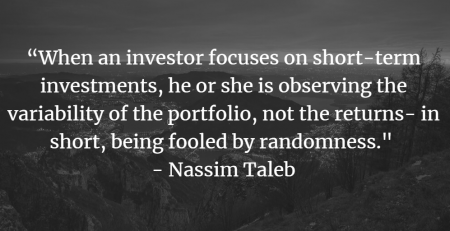Our Thoughts on Inflation
Over the past few weeks, you will likely have noticed increased mentions of inflation in the news. The March print for CPI (average price of consumer goods and services) came in rather high: +4.2% year-over-year. This is after many, many years of persistently low inflation. How concerning is this? Despite the markets knee jerk reaction (dumping “growth” names for “value” names), the reality of the situation is arguably much more benign.
If you take a detailed look of the CPI print, you will notice that the biggest year-over-year increases were car and truck rentals at +16%, used cars and trucks at +10%, airline fares +10%, lodging away from home at +8%. Basically, two thirds of the jump in CPI was due to the price of used cars and other ‘reopening’ sectors where the base rate from a year ago was depressed from the peak of the Covid-19 lockdown. If you remove these ‘reopening’ sectors, then the CPI print would have come in pretty much in line with past readings.
Aside from these base rate effects, there have also been some transitory forces at play. The widely enforced lockdown last year meant that many factories and supply lines around the world were effectively shut off. For example, we have experienced a global semiconductor chip shortage after customer demand for products like smartphones and vehicles rebounded much faster than chip supply could be turned back on. Something similar is happening with some commodities like lumber, where the problem is not that we don’t have enough trees, it’s that we shut down lumber mills right before demand for new housing and renovations went through the roof. And now those lumber mills are trying to catch up.
Along with this supply hit, we have also had an issue with shipping routes being disrupted as different countries shut down borders on different dates. On top of all that, the Suez Canal was blocked for a week – completely non-covid related. What this means in practice is that ports around the world are currently backed up months with key inventory and raw materials trapped at sea.
But there have also been some inflationary forces at play that will likely prove to be persistent. Consider that many companies around the nation are having trouble hiring right now. To incentivize new workers, these businesses are raising their wages. And in some states, minimum wages are increasing. Unlike most other goods and services, wages tend to be very sticky – you can give someone a raise, but you rarely give someone a pay cut.
All-in-all, it is likely that these forces will show up in the CPI print for much of the next year, many will turn out to be transitory, but it is of course also entirely possible that they could be persistent. Bear in mind that inflation, like many macroeconomic factors, is not something that can be predicted with any reliability, so it is best not to pay too much attention to anyone who tells you otherwise.
That said, the most cited argument for longer term inflation is the unprecedented fiscal and monetary support from governments around the world – a narrative which has been pushed for decades by gold advocates and recently by cryptocurrency advocates. Let’s explore the logic behind it.
Money Supply and Inflation
While longer term inflation is of course possible, many of the arguments for it miss how complex and nuanced this topic is. It is naïve to say that the money supply has doubled or tripled, therefore we are going to see runaway inflation. We would argue that such rhetoric misunderstands what money actually is and how it functions.
Firstly, we should remember that money itself technically has no value (nor does it need to), it is merely a tool to enable an exchange of goods. There is also no requirement for money to be scarce to avoid inflation – just look at the last 15 years when there has been an incredible amount of ’money’ creation and almost no inflation. In fact, a flexible money supply – one that can react to the needs of an economy – is a necessary and important part of our financial system. Fixed currencies such as gold, bitcoin etc. simply do not have the flexibility needed to optimize for economic growth.
The reasoning is simple: if you want to build a house you can go to the bank and ask for a loan. The bank creates a deposit for you out of thin air (money is ‘created’), you then build your house and over time you pay off your loan canceling out that original deposit. In monetary terms, we are back to the beginning but as a society we’ve progressed and grown – we now have a new house which did not exist before purely because the money supply was flexible and could expand with demand. This is where the value resides in any economic system – in the real goods and services that back our money supply, not in the money supply itself.
Now, consider that same housebuilding process if we had a fixed money supply such as gold (or bitcoin). In this world, the bank would not be able to create a deposit for you to build that home unless they had spare gold available to lend to you. If they didn’t, one of two things would need to happen – either the price of borrowing (interest rate) would be forced up such that you would pay a higher rate to get the bank to loan you gold they’d have to take back from someone else who was paying less, or the bank would simply not be able to provide the loan to you until other loans have been repaid. Either way, society is worse off and cannot grow as quickly or as efficiently. We are either going to be paying a lot more for the house or missing out on it being built entirely.
In other words, increases in the money supply per se are not a problem, in fact they can be very positive – the money supply should expand with the scale of productive opportunities in an economy. The problem arises only when money supply growth is not backed by real economic value being created.
Which brings us to the arguments about ‘inflationary’ monetary and fiscal policies. On the monetary side, it is often argued that quantitative easing (central banks creating money to buy bonds from banks) is inflationary. This is not directly true. Quantitative easing provides liquidity to the banking system, but it does not necessarily increase the real money supply that the average consumer deals with – that can only happen when the banks lend that new liquidity out, and then we get back to the conversation above on whether that is being lent to create real economic value or not.
As far as fiscal policy like the stimulus checks, this is a direct increase of the money supply that consumers deal with, but in the case of Covid-19 support this was to some extent just filling a hole caused by nationwide shutdowns. That is not to say there are not some pockets of concern – consider how much stimulus has found its way into Robinhood day trading accounts, risky investment vehicles like SPACs, NFTs, and cryptocurrencies. We certainly would not argue that any of this activity is leading to real economic value.
It should by now be clearer that this is a complex topic that does not lend itself easily to prediction despite what the financial news pundits would have you believe. However, given the potential for higher inflation ahead, it is a worthwhile exercise to consider what that would mean from an investment perspective.
Stock Market Valuations in an Inflationary Environment
Many financial commentators are citing the risks to stock valuations if higher inflation persists. The prevailing narrative being that inflation typically leads to higher interest rates, higher interest rates raise the ‘risk free rate’ making returns on cash and bonds more attractive, such that money will flow out of equities and into these ‘lower risk’ asset classes. Thus, investors should sell out of equities in anticipation of this dynamic.
But on the other side there is an argument to buy equities as they are one of the few asset classes that can protect against inflation – companies can increase their prices, protecting their real earnings, whereas bond investors receive the same fixed coupon year in year out and if inflation exists, their real return is declining.
Given these two offsetting factors, it is difficult to truly pin down an ‘asset flow’ based impact of inflation on equities as an asset class.
However, there are four points we would like to make here in relation to inflation and the stock market:
1. Inflation and Discount Rates
Higher inflation results in higher interest rates (broadly true historically), which then means that when it comes to company valuation, future cash flows need to be discounted back to today’s value at a higher rate such that a higher discount rate will result in a lower company valuation today. Now whilst this is true mathematically, it ignores that higher inflation will also be reflected in higher revenue growth for these companies, and for many who are able to pass on higher prices to their customers, higher nominal cash flows also. So, the net effect should technically be a wash (nominal discount rate up, but nominal growth rate up as well) for those companies who are able to pass inflation on. The impact would be felt here only by those companies who are unable to increase their nominal cash flows in line with inflation.
At this point we would also like to make a slightly broader point around discount rates in general; anyone who is investing in companies where a small change in the discount rate completely nullifies their thesis is arguably not investing prudently in the first place. We at GCI never make an investment based on an assumption that a) we can pick what is the ‘correct’ discount rate (there is no such thing, it is subjective), or b) where small changes in said discount rate would render an otherwise attractive investment unattractive. Any rational investor knows that company valuation is never precise and therefore ensuring there is a sufficient margin of safety is crucial. We think about our investments qualitatively, figuring out which companies will be able to thrive with high likelihood under a variety of changing economic conditions.
If you take nothing else away from this piece, please take this: despite inflation being a complex and nuanced issue that is extremely hard to predict, if we are investing in only the highest-quality companies at reasonable valuations, then there is arguably little need to make that prediction anyway.
2. Inflation and Price Multiples
As most of you know, we avoid a reliance on price multiples for a variety of reasons, which we discuss in more detail here. Sadly, the broader market relies almost exclusively on multiples as a method for valuing businesses, and as such we need to be aware of how this may impact broader sentiment.
When market commentators say that equity valuations are likely to decline if inflation is prevalent, there technically is some truth to that statement – if you believe that multiples are in fact a guide to valuation (which they aren’t). It is a mathematical fact that price multiples will decline under an inflationary environment for the simple reason that they are a nominal, not a real measure (which is again a good reason to not put too much faith in them). Allow us to explain.
Let’s say there’s a company earning 10% return on equity, and there’s no inflation – therefore both nominal and real returns are 10%. Imagine this company trades at 10x earnings. Now if inflation appears at 5% and this company has the ability to pass on rising prices to its customers, it can maintain its real return of 10%, but its nominal return is now 15%. As the real return is still the same the company should still trade at the same multiple: 10x.
However, what has happened to the multiple calculation is that the denominator of the P/E is now 5% larger. So, all else equal the stock that was trading on 10x earnings now sees its valuation drop to just 6.7x earnings. The company is the same, its real cash flows are the same – but it appears to the market to have significantly de-rated. In reality, people should calculate ‘real’ PE ratios, but almost nobody does because as always, the market loves a shortcut.
This impact of inflation on multiples is often overlooked, particularly when considering different inflation levels between different countries or even different time periods. Companies operating in high inflationary environments look cheaper than those in low inflation environments. Imagine you are looking at a country where prevailing equity valuations are 20x vs the 35x S&P 500 multiple. Most commentators would (and often do) remark on the cheapness of the overseas market and the relative expensiveness of the US. Let’s assume for arguments sake that in both places companies are growing earnings at 15% a year, so the US appears to offer much less value. But, if the overseas country is running 6-7% inflation, their real earnings growth is in fact 8-9%, meaning the real PE multiple is in fact more like 35x. Accounting for inflation in price multiples is rarely done, but is hugely important.
Think about this point in terms of the market today vs history. Many commentators are keen to harp about ‘the high valuations’ in the market today and whilst this is partly due to the heavily skewed sector dominance of the S&P 500 (as we’ve discussed here), comparing multiples today to those over the last 30 years fails to account for the fact that we’ve been in a very low inflationary environment for the last decade. Newspapers are quick to reference how high today’s PE multiples are compared to previous decades, but that is of little relevance when we don’t adjust those nominal multiples for the fact that inflation used to run into double digits. Something else to think about, that is rarely mentioned in any commentary around overall market valuation.
3. Inflation and Taxes
One additional and very real impact of higher inflation is that on taxes. Taxes are levied on nominal earnings, not real earnings. Real earnings may not have changed for a company as inflation moves higher, but that company will find themselves paying tax on a higher nominal earnings number. This is true of both corporate taxes and those on private investors such as capital gains tax. So, investors and companies need to be aware of a greater real tax drag in higher inflationary environments.
4. Inflation and Liquidity
Some of these issues above are somewhat theoretical in nature. But there is also a more tangible impact of inflation. In that first point above we discussed the impact of higher interest rates on nominal discount rates when valuing businesses. In a similar vein, higher inflation often affects the short-term real cost of capital of many companies.
Consider that for many years we have been in a very liquid environment – plenty of cash available searching for a place to be invested. Arguably there has been too much cash available chasing too few investments, which is one reason for the significant asset price inflation we’ve seen. As we mentioned earlier, some the more spurious and nonsensical ‘investments’ of the last few years such as cryptocurrencies, NFTs (non-fungible tokens), SPACs, etc. are symptomatic of too much liquidity. Investors end up inflating assets regardless of how ridiculous they may seem – there’s simply too much cash available and it has to go somewhere. As a result, we end up seeing bull markets and bubbles in certain assets that have little to no grounding in reality or expectations of future returns or cash flows.
As we’ve written about in our recently published book (available on Amazon here), the investment industry has evolved over decades to a state where it is now superbly adapted to create shiny new products to sell to clients and advisors to soak up all this excess liquidity. Even though in reality many of these new products and ‘asset classes’ have little hope of long-term success.
But what about when liquidity is pulled from the system, perhaps in an attempt by monetary authorities to clamp down on inflation and speculation? Suddenly, there is less real capital chasing the same amount of investments. Capital will have to begin to be rationed – resulting in falling asset prices, particularly in those very same sectors of excess where the gains had been greatest.
We need to be aware of this effect as and when the overall liquidity in the financial system begins to tighten. This has yet to occur and we would also argue that we as a firm are very well positioned for such an environment, being solely and exclusively invested in very high-quality companies with resilient earnings streams. It will be those assets that have benefited most from the glut of liquidity – extremely speculative high growth stocks, cryptocurrencies, SPACs etc. that will suffer the most when that same liquidity is withdrawn.
Disclosures: This website is for informational purposes only and does not constitute an offer to provide advisory or other services by Globescan in any jurisdiction in which such offer would be unlawful under the securities laws of such jurisdiction. The information contained on this website should not be construed as financial or investment advice on any subject matter and statements contained herein are the opinions of Globescan and are not to be construed as guarantees, warranties or predictions of future events, portfolio allocations, portfolio results, investment returns, or other outcomes. Viewers of this website should not assume that all recommendations will be profitable, or that future investment and/or portfolio performance will be profitable or favorable. Globescan expressly disclaims all liability in respect to actions taken based on any or all of the information on this website.
There are links to third-party websites on the internet contained in this website. We provide these links because we believe these websites contain information that might be useful, interesting and or helpful to your professional activities. Globescan has no affiliation or agreement with any linked website. The fact that we provide links to these websites does not mean that we endorse the owner or operator of the respective website or any products or services offered through these sites. We cannot and do not review or endorse or approve the information in these websites, nor does Globescan warrant that a linked site will be free of computer viruses or other harmful code that can impact your computer or other web-access device. The linked sites are not under the control of Globescan, and we are not responsible for the contents of any linked site or any link contained in a linked site. By using this web site to search for or link to another site, you agree and understand that such use is at your own risk.






